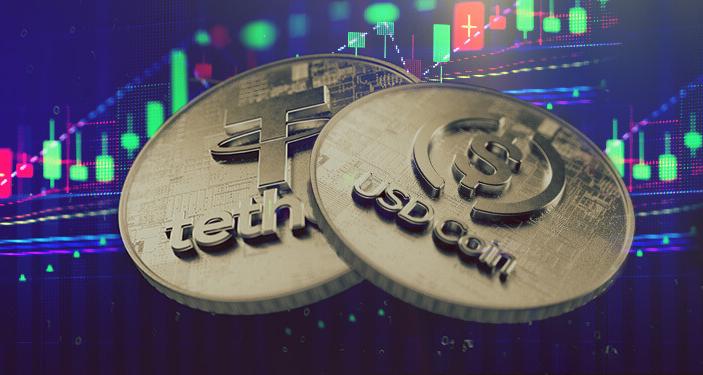David Agullo
Would it be good for you to hold Your Fiat in USDT or USDC?

While no one in crypto is especially a fan of Fiat currencies, there is a genuine need for a stablecoin to stow away in when you anticipate a market slump or simply while trading in and out of different digital currencies — and keeping in mind that there’s DAI it currently doesn’t have the innovation or security for this especially use-case.
There’s just USDT, USDC, Actual Fiat, and T-USD — however in truth T-USD’s volume and trade listings is too inadequate to be a genuine choice, and real fiat causes issues when it comes to moving between trades and various issues, for example, only being accessible on higher-commission taking trades, just on KYC-requiring exchanges, and trades that don’t have numerous alt-coins on them.
Thus there are only two genuine decisions — USDT and USDC, one that is backed by Tether Ltd. the other backed by Coinbase.
In this article, we’ll cover the differences between the two coins, and which coin we use, and why we use it rather than the other. To Summarize – We use USDC as it’s been and keeps on being evaluated, and thus is far more secure than USDT as we probably are aware Coinbase is solvent and has the assets while we honestly have no idea if Tether has adequate Tether to back up the tokens they’ve given — but the most recent review we’re aware of, the main review of tether, showed that they had 70% – 75% of the USD they should to cover all the tether they’ve given.
Is USDT or USDC Safer?
In terms of innovation, they’re exactly similar — they’re incorporated tokens created on the decentralized Ethereum blockchain. No one will reach into your Ethereum Wallet, or into the Exchange wallet and take USDT simpler than USDC or vice-versa.
Anyway, when it comes to the basics of the coins, we’d safe USDC is more secure — although not as much as the USDT-haters might lead you to think.
We say this because USDC is “produced” by one of the biggest digital currency trades in the world that has brilliant security and productivity — and more significantly — is inspected frequently to guarantee their solvency. This remembers reviews for USDC, guaranteeing that they have adequate deposits to back each USDC coin that is as of now available for use.
Meanwhile, USDT has had suspicious incidents in the past that causes individuals to accept they effectively have prevented reviews from taking place — and accordingly that they should not be solvent and have sufficient USD reserves for all the tokens they’ve given. New data revealed in the main tether review we are aware of showed that they just have around 70% – 75% of the USD to cover the USDT coins they’ve issued.
Knowing the set of experiences and transparency of both of these organizations, that USDC is more secure and a superior choice since they’re listed on Binance and have exchanging sets with the most important cryptocurrencies.
Where USDC/USDT should be Kept?
While we don’t hold a lot of USDC or USDT, or any stablecoin so far as that is concerned, including decentralized ones like DAI, we’d say the best place to keep such resources depend on your purpose in keeping them. if you’re day-trading utilizing them, clearly they’ll need to be on a trade or def-associated wallet to permit you to make exchanges immediately.
There are better other options if your reason for holding stablecoin is not day-trading — to be specific lending them out on revenue bearing platforms like Celsius or BlockFi, which give you a yield of 8% – 14% every year on stable-coin deposits, also offer very great signup rewards, $40 reward in BTC when joining to Celsius and somewhere in the range of $15 and $250 relying upon your initial deposit
Besides the sign-up rewards though, we incline toward Celsius because they offering a better return than BlockFi on stablecoin deposits — frequently destroying BlockFi by 3% – 4% yearly — this is the reason we use Celsius for our stablecoin holdings, while we utilize both when it comes to Crypto-deposits, as their rates when it comes to Bitcoin/Ethereum and other crypto-resources are moderately similar otherwise.
Latest
Guides & Tutorials
09 May 2024
Guides & Tutorials
19 Apr 2024
Guides & Tutorials
16 Jan 2024
Guides & Tutorials
31 Aug 2023
Guides & Tutorials
24 Jun 2023
Guides & Tutorials
24 Jun 2023













